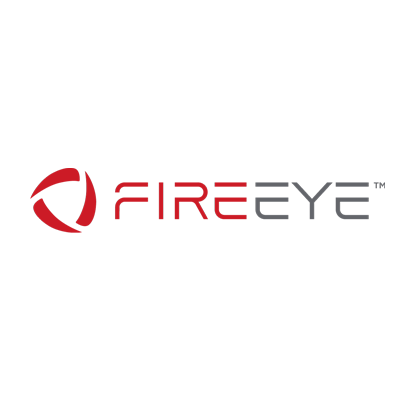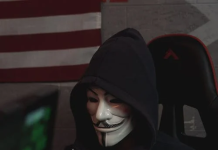Threat Research Blog
Smoking Out a DARKSIDE Affiliate’s Supply Chain Software Compromise
Mandiant observed DARKSIDE affiliate UNC2465 accessing at least one victim through a Trojanized software installer downloaded from a legitimate website. While this victim organization detected the intrusion, engaged Mandiant for incident response, and avoided ransomware, others may be at risk.
As reported in the Mandiant post, “Shining a Light on DARKSIDE Ransomware Operations,” Mandiant Consulting has investigated intrusions involving several DARKSIDE affiliates. UNC2465 is one of those DARKSIDE affiliates that Mandiant believes has been active since at least March 2020.
The intrusion that is detailed in this post began on May 18, 2021, which occurred days after the publicly reported shutdown of the overall DARKSIDE program (Mandiant Advantage background). While no ransomware was observed here, Mandiant believes that affiliate groups that have conducted DARKSIDE intrusions may use multiple ransomware affiliate programs and can switch between them at will.
Sometime in May 2021 or earlier, UNC2465 likely Trojanized two software install packages on a CCTV security camera provider website. Mandiant determined the installers were malicious in early June and notified the CCTV company of a potential website compromise, which may have allowed UNC2465 to replace legitimate downloads with the Trojanized ones.
While Mandiant does not suspect many victims were compromised, this technique is being reported for broader awareness. Software supply chain attacks can vary greatly in sophistication, from the recent FireEye-discovered SolarWinds attacks to attacks such as this targeting smaller providers. A software supply chain attack allows a single intrusion to obtain the benefit of access to all of the organizations that run that victim company’s software; in this case, an installer, rather than the software itself, was modified by UNC2465.
DARKSIDE RaaS
In mid-May 2021, Mandiant observed multiple threat actors cite an announcement that appeared to be shared with DARKSIDE RaaS affiliates by the operators of the service. This announcement stated that they lost access to their infrastructure, including their blog, payment, and content distribution network (CDN) servers, and would be closing their service. The post cited law enforcement pressure and pressure from the United States for this decision.
Multiple users on underground forums have since come forward claiming to be unpaid DARKSIDE affiliates, and in some cases privately provided evidence to forum administrators who confirmed that their claims were legitimate. There are some actors who have speculated that the DARKSIDE operator’s decision to close could be an exit scam. While we have not seen evidence suggesting that the operators of the DARKSIDE service have resumed operations, we anticipate that at least some of the former affiliates of the DARKSIDE service will likely identify different ransomware or malware offerings to use within their own operations.
Notably, Mandiant has continued to observe a steady increase in the number of publicly named victims on ransomware shaming sites within the past month. Despite the recent ban of ransomware-related posts within underground forums, threat actors can still leverage private chats and connections to identify ransomware services. As one example, in mid-May 2021, the operator of the SODINOKIBI (aka REvil) RaaS indicated that multiple affiliates from other RaaS platforms that had shut down were switching to their service. Based on the perceived profitability of these operations, it is almost certain that numerous threat actors will continue to conduct widespread ransomware operations for the foreseeable future.
Background
In June 2021, Mandiant Consulting was engaged to respond to an intrusion. During analysis, Mandiant determined the initial vector was a trojanized security camera PVR installer from a legitimate website. Mandiant attributed the overall intrusion activity to DARKSIDE affiliate UNC2465 due to continued use of infrastructure and tooling since October 2020.
On May 18, 2021, a user in the affected organization browsed to the Trojanized link and downloaded the ZIP. Upon installing the software, a chain of downloads and scripts were executed, leading to SMOKEDHAM and later NGROK on the victim’s computer. Additional malware use such as BEACON, and lateral movement also occurred. Mandiant believes the Trojanized software was available from May 18, 2021, through June 8, 2021.
Pivoting on the slightly modified, but benign, MSHTA.exe application in VirusTotal, Mandiant identified a second installer package with the MD5 hash, e9ed774517e129a170cdb856bd13e7e8 (SVStation_Win64-B1130.1.0.0.exe), from May 26, 2021, which also connects out the same URL as the Trojanized SmartPSS installer.
Supply Chain Intrusion Cycle

Figure 1: Intrusion cycle
Phase 1: Trojanized Installer Download
Mandiant Consulting observed the Trojanized installer downloaded on a Windows workstation after the user visited a legitimate site that the victim organization had used before.
The downloaded file was extracted to
C:Users[username]Downloads�6212019-General-SMARTPSS-Win32-ChnEng-ISGeneral_SMARTPSS-Win32_ChnEng_IS_V2.002.0000007.0.R.181023SMARTPSS-Win32_ChnEng_IS_V2.002.0000007.0.R.181023-General-v1.exe.
Mandiant confirmed the user intended to download, install, and use the SmartPSS software. Figure 2 shows an image of the download page used for SmartPSS software.

Figure 2: SmartPSS download page
Phase 2: Nullsoft Installer
The installer executable is a Nullsoft installer that when executed wrote two files to C:ProgramDataSMARTPSS-Win32_ChnEng_IS. We were able to extract the malicious installer script and files for analysis using 7-Zip. The relevant section of this installer script is shown below in Figure 3.

Figure 3: Nullsoft installer script section
The installer script created two files: SMARTPSS-Win32_ChnEng_IS_V2.002.0000007.0.R.181023-General.exe (b540b8a341c20dced4bad4e568b4cbf9) and smartpss.exe (c180f493ce2e609c92f4a66de9f02ed6). The former is a clean installer from the original developer and is launched first, installing the software as the user may expect. The latter is launched with a command line URL executing the content.
The smartpss.exe file contained metadata describing itself as MSHTA.exe from Microsoft, a legitimate operating system component, but the MD5 hash was unknown. Disassembly analysis of the program showed it was a small application that loaded the IE COM object and launched the function RunHTMLApplication() against the command line argument provided. This functionality matched the behavior of the legitimate MSHTA.exe despite the hash discrepancy. Further analysis showed that the malware was based on a 2018 version of the binary (original hash: 5ced5d5b469724d9992f5e8117ecefb5) with only six bytes of data appended, as shown in Figure 4.

Figure 4: CyberChef diff between MSHTA.exe and smartpss.exe
Phase 3: Downloaded VBScript and PowerShell
Upon execution, the modified Mshta file was executed with the URL, hxxp://sdoc[.]xyz/ID-508260156241, and passed as an argument on the command line.
Domain sdoc[.]xyz was first associated with UNC2465 by RiskIQ in a May 20, 2021, blog post researching the infrastructure that Mandiant previously reported. According to RiskIQ, sdoc[.]xyz shares a registrant with koliz[.]xyz, which was also observed by Mandiant in past UNC2465 intrusions.
|
C:PROGRAMDATASMARTPSS-Win32_ChnEng_ISsmartpss.exe hxxp://sdoc[.]xyz/ID-508260156241 |
The execution of the modified Mshta file resulted in the creation of a HTM file called loubSi78Vgb9[1].htm that was written to a temporary INetCache directory. Mandiant was not able to acquire this file at the time of writing; however, Mandiant was able to recover partial contents of the file.












